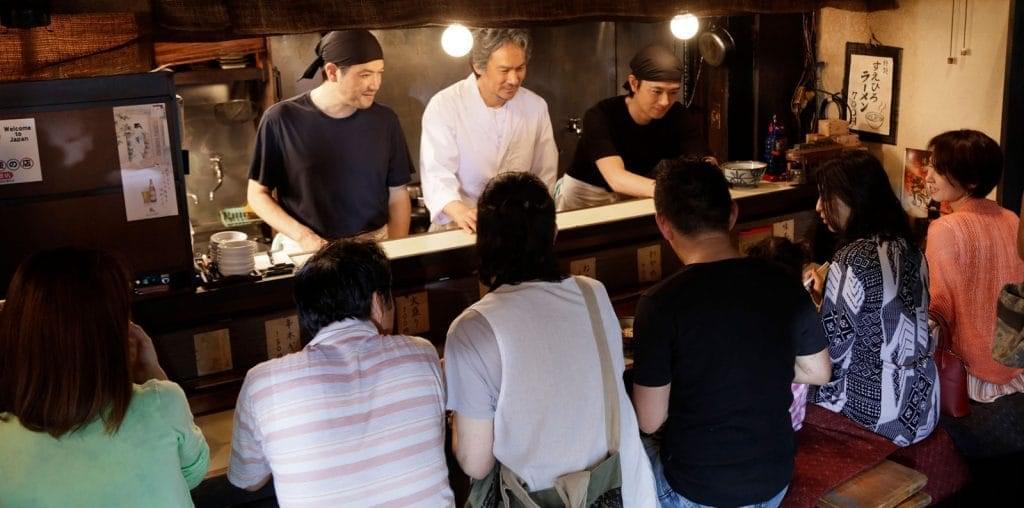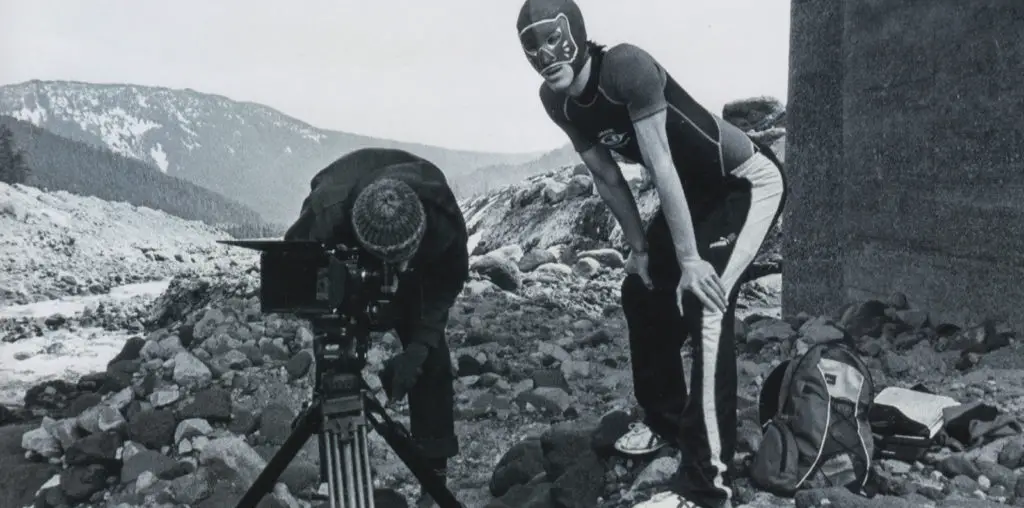
Everyone knows that Orson Welles began his filmmaking career with the biggest bang in movie history. Ironically, Welles ended his filmmaking career with one of the most elusive whispers ever captured on by a camera: “Filming Othello,” a fascinating documentary that Welles made for West German television regarding the story behind the production of his 1952 film version of “Othello.”
Unless you are a Welles fanatic, you probably never heard of “Filming Othello”–and unless you are involved in the purchase of bootleg videos, you probably never saw the film. Aside from a single three-week run at a New York theater in 1978, “Filming Othello” has never been made available to the American market and its exhibition has been prevented for years due to a feud between its producers and Beatrice Welles, the late filmmaker’s daughter and the owner of the 1952 Welles production of “Othello.” This is a major shame, as “Filming Othello” provides an important coda to Welles’ career as an artist while offering unusual insight into one of Shakespeare’s most disturbing plays.
Welles came to make his film of “Othello” totally by accident: he was originally in pre-production for a 1948 French-based film of “Cyrano de Bergerac” when that project was aborted. An offer came from an Italian producer to make a film of “Othello” as a French-Italian co-production, but the French side of the financing vanished while Welles was rehearsing his cast. When Welles took his company on location to Morocco to begin filming, the Italian half of the financing also disappeared. So did the film’s costumes, which never arrived at the Moroccan location. Welles scrambled to self-finance the film and overcame the lack of costumes by grabbing a number of towels and shooting the planned sequence (the murder of Rodrigo) in a Turkish bath.
The shooting for “Othello” stretched across four years, with the filmmaker constantly shutting down the production to raise money via acting gigs in a series of European films (most notably the Carol Reed thriller “The Third Man”). The stop-and-start production inevitably created problems in continuity, especially with a revolving door of cinematographers who came to the film unaware of how their predecessors shot the sequences. “Othello” eventually was finished and had its premiere at the 1952 Cannes Film Festival, where it won top honors as the Moroccan entry (Welles facetiously claimed the film for Morocco, owing the bulk of the production was centered there).
Yet “Othello” never found a solid following; the reviews of the film were wildly mixed and its American theatrical release in 1955 was brief and unsuccessful. Welles himself seemed to harbor mixed feelings about his production, admitting that when played “Othello” on stage later he would purposely find a different manner in which to plumb the character’s soul.
“Filming Othello” is primarily a monologue by Welles detailing the strange way the film was made. Although Welles insists on calling this film a “conversation,” it is primarily a one-man-talk with two brief sequences where other voices are heard: a luncheon/reunion with his “Othello” co-stars Micheal MacLiammoir and Hilton Edwards and a Q-and-A session in Boston following a 1977 screening of the film.
The idea of an 80-minute lecture-as-movie may not sound like fun, but you need to remember who is talking here. As a raconteur, Welles was without peer. While half-apologizing for offering the audience “a scrambled, disjointed series of notes,” Welles actually provides a riveting exploration into the nuts-and-bolts of film production, the psychological and gut-emotional undercurrents within the Shakespeare text, and he even recites a pair of soliloquies from “Othello” delivered with the majesty of voice and intellect that once made Welles the pre-eminent Shakespearean actor of the American theater. Much of the talk is quite startling and funny, most notably when he reveals the crazy manner in which the cash-starved “Othello” was improvised on the set (Welles kept his camera far from the armor-clad extras to avoid detailing how the armor were actually flattened sardine cans welded together). Yet some of the talk is unexpected, especially as Welles states the major flaw of his “Othello” performance was the fact he was too young for the role.
Welles fans who come to “Filming Othello” expecting the extraordinary cinematography and editing that is hallmark to his films will be in for quite a surprise. Visually, “Filming Othello” is little more than extended static takes. And what little cinematic trickery is here is fairly obvious, most notably the clumsy insert shots of Welles during his lunch with the two former co-stars. In a truly remarkable confession, Welles acknowledges that the lunch scene ended abruptly for the cameras due to a planning oversight: “We did not run out of talk; we ran out of film.”
But the most awkward (and unintentionally funny) production trick here involves Welles himself. When this film was made, Welles was fairly obese and clearly he did not want to be seen in full-figure. Yet in filming himself, he actually calls attention to his girth by setting up shots where a full view of his body is always blocked by various objects (books, a fruit bowl, mineral water bottles, a moviola). While this gets to be distracting, at lease he is due credit for his attempts not too look fat on-screen.
During the course of “Filming Othello,” Welles wisely remarks that “promises are more fun than explanations.” And while he promises to share information on the making of “Othello,” Welles casually ignores several key questions regarding this famous film. Most notably, the original release of the film was terribly out-of-sync and Welles was clearly aware of this as he only shows the images of “Othello” here without running the dialogue soundtrack (the controversial restored version from the early 1990s corrected that problem). There was also the well-documented problems of casting Desdemona; American actress Betsy Blair left when the production began to drag on and her replacement, the Canadian actress Suzanne Cloutier, proved to be such an inadequate choice that her performance was dubbed by another actress in post-production. But Welles never mentions his actress woes here. Why these issues were not raised is a puzzle.
In any event, “Filming Othello” is a remarkable and unusual wrap-up to Welles’ amazing career. And until the film can be made available for proper release, it would hardly be a sin to dip into the bootleg video world and fish out a copy of this very worthwhile semi-lost film.

